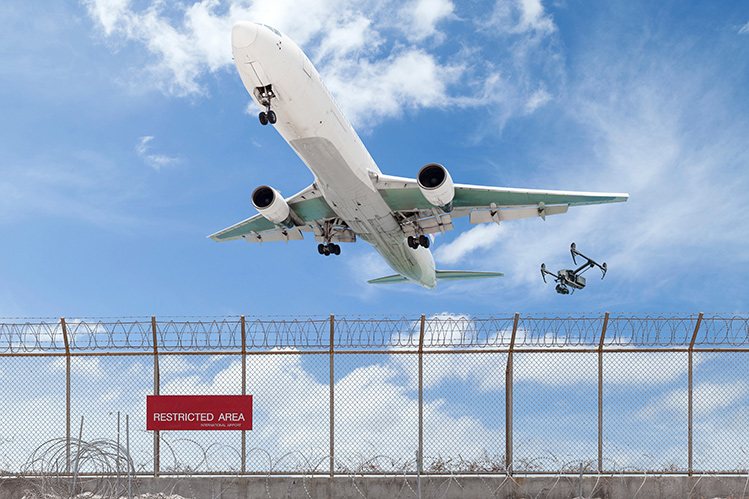By Maarten Wings, Global Vertical Manager Airports, Bosch Security Systems
The catastrophic damage caused when a drone collides with an airplane presents a clear security threat to airports. At the same time, the risk of a drone incident occurring is increasing because the number of remote-controlled drones for private use, including video-equipped aerial vehicles, is now at an all-time high.
You might ask yourself, who then is responsible when there is a drone incident at the airport? The safety manager would be the obvious answer. But the issue is actually far more complex.

Considering the need to mount a strategic response to this growing threat, which affects all stakeholders.
Determining responsibility
A drone incident sets off a chain reaction at an airport. Safety managers take jurisdiction when an intruding drone near the runway would put the safety of passengers and crew in starting, landing, and flying planes at risk. Operational managers would take charge in cases of cancelled flights to prevent lost revenue for airlines. Stranded passengers in the terminal become a security issue for the security manager because they are a soft target for terrorism. But such a complex situation requires that all airport stakeholders are informed and have protocols in place.
Rather than working separately, a cross-department joint discussion about how to proactively deal with drones would be much better. Considering the massive operational disruption, reputational damage, passenger dissatisfaction and security risks caused by drone incidents, airports need to mount a strategic response to this growing threat, which affects all stakeholders.
Technology spotlight: Drone detection meets the perimeter security system

Maarten Wings, Global Vertical Manager Airports: “Cameras installed along the airport perimeter fence can be integrated with radar technology of the drone detection system and are leveraged to track the drone along its course. Efficient and cost effective.”
The positive news: there is already drone detection technology on the market. But by just using radar technology to detect drones, safety managers are missing a critical viewpoint. A visual perspective is also needed for operators to make a threat assessment, to determine whether a drone may be carrying foreign objects, classify the drone and observe its behaviour.
By creating collaborative safety and security measures, airports can better detect and react to drones. Cameras installed along the airport perimeter fence can be integrated with the drone detection system. When the drone detection system is triggered, the system relays the three-dimensional coordinates to the closest camera mounted on the perimeter fence to confirm that the object is a drone, and if so, keep tracking its course. The system integration of radar based drone detection system with high-definition cameras is already put in practice. And critically, integrating airside safety solutions with perimeter security is not only more effective for airports, but also more cost-efficient.
The pressure is on airports to prepare for every scenario. Because when a drone breaches a perimeter, there are two types of airports: those with real-time intrusion detection and cross-departmental response protocols in place, and those caught completely by surprise.







